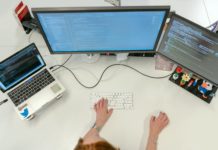According to Dr. Janson Yap, former Regional Managing Director for Deloitte Southeast Asia and current Chief People Officer at the National University of Singapore, reducing one’s workload will not reduce burnout.
The world is currently in a constant state of tension, which experts have termed as VUCA (volatility, uncertainty, complexity, and ambiguity), causing stress levels to rise to unprecedented levels.
This observation of society’s ever-changing expectations inspired Dr. Yap to author the book “Why ME?: Motivations and Expectations of the Worker in a Wicked World.”, a book that provides an in-depth look into the work cultures, employer, as well as employee motivations, expectations and engagements.
The book’s findings also convey the results of an in-depth study on work culture in a rapidly changing work context in ASEAN countries, which was conducted by Dr. Yap of the National University of Singapore (NUS).
1. Align employee’s motivations & expectations
As seen in a 2021 Gallup poll, there were more negative feelings recorded as compared to previous years and, while a common remedy would be to reduce the workload, Dr. Yap has identified a misalignment in employees’ motivations and expectations as the root cause of burnout.
One result derived from the study is that employee benefits do not satisfactorily address burnout. Instead, going forward, it is imperative that business leaders give a meaningful purpose to employees at work and demonstrate that what they are doing contributes to the said purpose, while constantly nipping issues such as burnout and demotivation in the bud.
2. Throwing conventional wisdom out the window
Another result from the study is that the age-old adage of ‘get a degree and work hard to be successful’ no longer bears certainty nor does it guarantee success.
For example, the Distribution of Career Stages by Age Group study focuses on employees’ progression through these five career stages that most people go through during their adult years, namely (1) Exploration, (2) Establishment, (3) Mid-Career, (4) Late Career and (5) Stepping back, have been drastically changed before and after the pandemic.
Traditionally, it is expected that the employees’ Career Stages follow a linear and coherent development corresponding to their age groups, where one would be focused more on Exploration in their early 20s, followed by Establishment by their 40s, and Stepping Back in their 60s and above.
However, in their study, Dr. Yap found that there has been a shift in respondents’ attitudes post-COVID-19 and that the traditional view of the Career Stages no longer applies.
For example, one could be in the Exploring stage in their 40s or even in their 60s through mid-career switches, taking up new roles, or venturing into new domains. This was particularly evident in the ‘Great Resignation’ during the pandemic, where a shift in people’s priorities resulted in a mass exodus of employees leaving their positions and occupations.
3. Changed Work Arrangements
The shift to hybrid work arrangements brought on by the pandemic has had a significant impact on work expectations, creating difficulties for both employees and employers. Some employees see this as an advantage, while others don’t.
Dr. Yap acknowledges the challenges faced by managers and supervisors, many of whom are not familiar with measuring productivity in a remote setting. However, he believes that those who approach the situation with a positive attitude, confidence in themselves, and a willingness to adapt will be successful in navigating the uncertain VUCA world.
4. Upskill, Upskill, Upskill
According to Dr. Yap, with the rapid and further enablement of technology, demand for skills across industries will shift and skills gaps will widen even further. Moreover, the types of skills needed for the jobs of tomorrow will be significantly different and even more specialised, with critical-thinking, problem-solving and self-management abilities (e.g. active learning, resilience, stress tolerance, and flexibility) gaining prominence.
5. Change Continues to Change in the VUCA World
Former Prime Minister of Singapore, Mr. Lee Kuan Yew, once said, “Change is the very essence of life. The moment we cease to change, to be able to adapt, to adjust, to respond effectively to new situations, then we have begun to die.”
Future work and work culture are all about embracing change as companies try to keep up with the rapid technological changes expedited by the pandemic. Companies must determine which work culture changes are good and should be preserved, while those that are counterproductive must be managed, controlled, and retired.
In closing, Dr. Yap stated, “There is no ideal solution. It is crucial to weigh the pros and cons, make compromises and take action. Continuously make adjustments and keep learning.” However, it is Dr. Yap’s hope that the discussion above, as well as their findings, will be helpful for leaders and managers to better engage their stakeholders in different situations, come what may.














